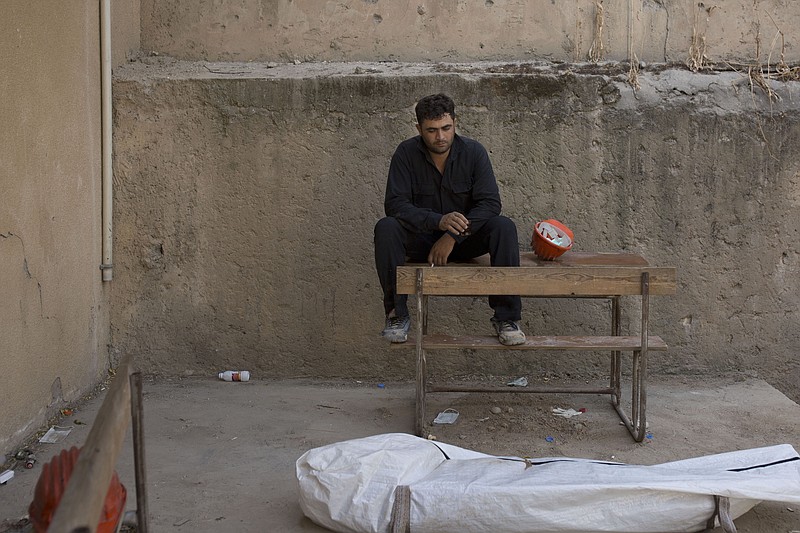RAQQA, Syria (AP) — The neighbors reported a foul smell coming from the house next door. The house, which the Islamic State group had used as a school for its “cubs,” had been untouched ever since the militants were chased out of the Syrian city two years ago. Weeds grew around an abandoned car in its courtyard.
Even before the first responders felt the soft ground of the courtyard, they knew what was underneath: the latest mass grave in Raqqa, the former capital of the Islamic State group’s self-declared “caliphate.”
On the first day of digging, they pulled out two bodies. Within a few days, that was up to nearly 20, including women and children, who had been stacked up in holes in the courtyard garden.
The discovery, seen by Associated Press journalists over the weekend, was the 16th mass grave found in Raqqa since IS militants were driven out in summer 2017. Even as Raqqa’s people gradually rebuild, the graves found in houses, parks, destroyed buildings are a grim reminder of the horrors perpetrated by the militants and the massive violence inflicted on the city to remove them.
During their rule, the extremists carried out mass killings, public beheadings and other atrocities. Women and men accused of adultery were stoned to death, while men believed to be gay were thrown from the tops of buildings and then pelted with stones.
More death came in the years-long aerial and ground campaign to liberate Raqqa, waged by Kurdish-led forces backed by airstrikes from the U.S.-led coalition. The assault destroyed nearly 80 percent of Raqqa.
So far, 5,218 bodies have been exhumed from mass graves or from under the ruins of destroyed buildings around Raqqa, said Yasser Khamis, who leads the team of first responders. Of those, around 1,400 were IS fighters, distinguishable by their clothes and including some foreigners, he said. Of the remainder, 700 have been identified by their loved ones, mainly because they were the ones who buried the bodies.
Khamis said limited resources have slowed the search and made it difficult to determine the cause of death for most. However, those killed have died in airstrikes, land mine explosions, mass killings, or they were IS fighters or victims buried by the group. Some were recently exhumed with handcuffs.
The dead found in the latest grave were likely killed in the last days of the furious battles for Raqqa, buried in a rush during the fighting. The house is located in Raqqa’s Bedouin District, scene of one of the last IS stands against the siege.
The house was built in a traditional Arab style, with a courtyard in the center surrounded by rooms. The outside walls were pockmarked with bullet holes. IS had used it as a school during its rule, and school notebooks and children desks were strewn around the rooms.
In the garden in the courtyard, diggers pulled a new body from the ground Saturday as an AP team visited the site. It had a uniform on it, sign of an IS fighter. Digging ended Monday, with a total of 19 bodies found, including three women and two children.
Ibrahim al-Mayel, a digger, said many of the bodies they had found had been piled roughly on top of each other in the ground.
Such house burials account for most of the city’s mass graves as civilians buried their dead where they could, unable to go far as fighting intensified. Other graves in the same district — two in homes, two in gardens — have yielded 90 bodies.
At least two mass graves have been found in open areas in the city — a public park and a training compound — or on the city’s edges, where fighters buried their own or people they killed. The grave in the park held at least 1,400 bodies, Khamis said. His teams are still digging up bodies in a mass grave outside the city, where they found more than 700 so far.

